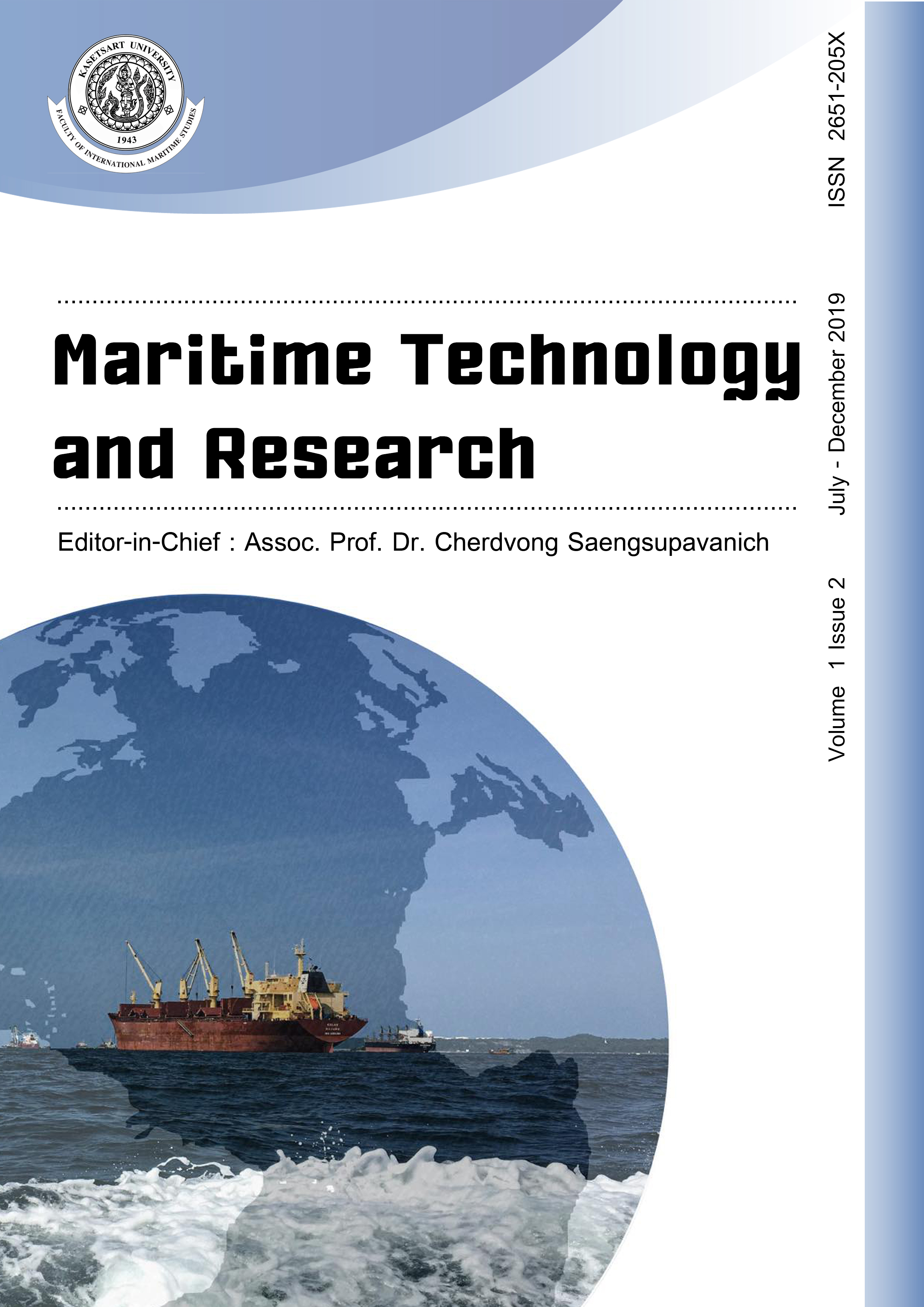Numerical simulation on hydrodynamic performance of parallel twin vertical axis tidal current turbines
DOI:
https://doi.org/10.33175/mtr.2019.176062Keywords:
Tidal current energy, Vertical-axis hydro-turbine, Hydrodynamic performance, Parallel twin turbines, Wake flowAbstract
Single and parallel twin vertical axis hydro turbines were numerically simulated by using OpenFOAM software, studying the interference effects, such as torque and load of turbine, as well as hydrodynamic performance influenced by the distance and rotation forms between twin turbines, and analyzing the wake flow field to show the velocity profile distribution. The results showed that the average power of parallel twin turbines is always higher than the power of a single turbine, and the closer the lateral distance between turbines, the higher the power. When lateral distance approximates to 1.25 times turbine diameter, and turbines rotate in the opposite inward direction, the average energy efficiency value of parallel twin turbines is about 25 % higher than that of a single one. Additionally, opposite inward rotation is the best arrangement form for twin turbines to obtain more power and counteract lateral force.
References
Dyachuk, E., Goude, A., Lalander, E., & Bernhoff, H. (2012). Influence of incoming flow direction on spacing between vertical axis marine current turbines placed in a row. American Society of Mechanical Engineers 7, 285-292. doi:10.1115/OMAE2012-83347
Gebreslassie, M. G., Tabor, G. R., & Belmont, M. R. (2012). CFD Simulations for sensitivity analysis of different parameters to the wake characteristics of tidal turbine. Open Journal of Fluid Dynamics 2(3), 56-64. doi:10.4236/ojfd.2012.23006
Goude, A., & Agren, O. (2010). Numerical simulation of a farm of vertical axis marine current turbines. In Proceedings of the 29th International Conference on Ocean, Offshore and Arctic Engineering. American Society of Mechanical Engineers, pp. 335-344. doi:10.1115/OMAE2010-20160
Guo, F. S. (2013). Performance analysis of vertical-axis tidal current turbines and optimizing turbines array. M. Chinese. Thesis, Dalian University of Technology, Dalian, China.
Jun, D. Shan, Z. D., & Wang X. F. (2010). Research status of tidal current turbine. Renewable Energy Resources 28(4), 130-133.
Kai, W., & Ke, S. (2016). Impact of phase angle on the hydrodynamic performance of a bi-unit vertical axis tidal current energy water turbine. Journal of Harbin Engineering University 37(1), 104-109.
Ke, S., Yan, L., Kai, W., & Liang, Z. (2017). CFD simulation analysis on the wake effect of tandem vertical axis tidal turbines. Journal of Harbin Institute of Technology 50(5), 185-191. doi:10.11918/j.issn.0367-6234.201606097
Lee, J. K., & Hyun, B. S. (2016). Study on performance variation according to the arrangements of adjacent vertical-axis turbines for tidal current energy conversion. Journal of Korean Marine Environment and Energy Institution 19(2), 151-158. doi:10.7846/JKOSMEE.2016.19.2.151
Liang, Z., Li, X. Z., & Jing, G. (2013). Tidal current energy update 2013. Advances in New and Renewable Energy 1(1), 62-63.
Patel, V., Eldho, T. I., & Prabhu, S. V. (2017). Experimental investigations on Darrieus straight blade turbine for tidal current application and parametric optimization for hydro farm arrangement. International Journal of Marine Energy 17, 110-135. doi:10.1016/j.ijome.2017.01.007
Ye, L., & Calisal, S. M. (2010a). Modeling of twin-turbine systems with vertical axis tidal current turbines: Part I-Power output. Ocean Engineering 37(7), 627-637. doi:10.1016/j.oceaneng.2010.01.006
Ye, L., & Calisal, S. M. (2010b). Three-dimensional effects and arm effects on modeling a vertical axis tidal current turbine. Renewable Energy 35(10), 2325-2334. doi:10.1016/j.renene.2010.03.002
Ye, L., & Calisal, S. M. (2011). Modeling of twin-turbine systems with vertical axis tidal current turbine: Part II-torque fluctuation. Ocean Engineering 38(4), 550-558. doi:10.1016/j.oceaneng.2010.11.025
Yong, M., Chao, H., Li, Y., Li, L, Deng, R, & Jiang, D. (2018). Hydrodynamic performance analysis of the vertical axis twin-rotor tidal current turbine. Water 10(11), 1694. doi:10.3390/w10111694
Downloads
Published
Issue
Section
License
Copyright: CC BY-NC-ND 4.0








